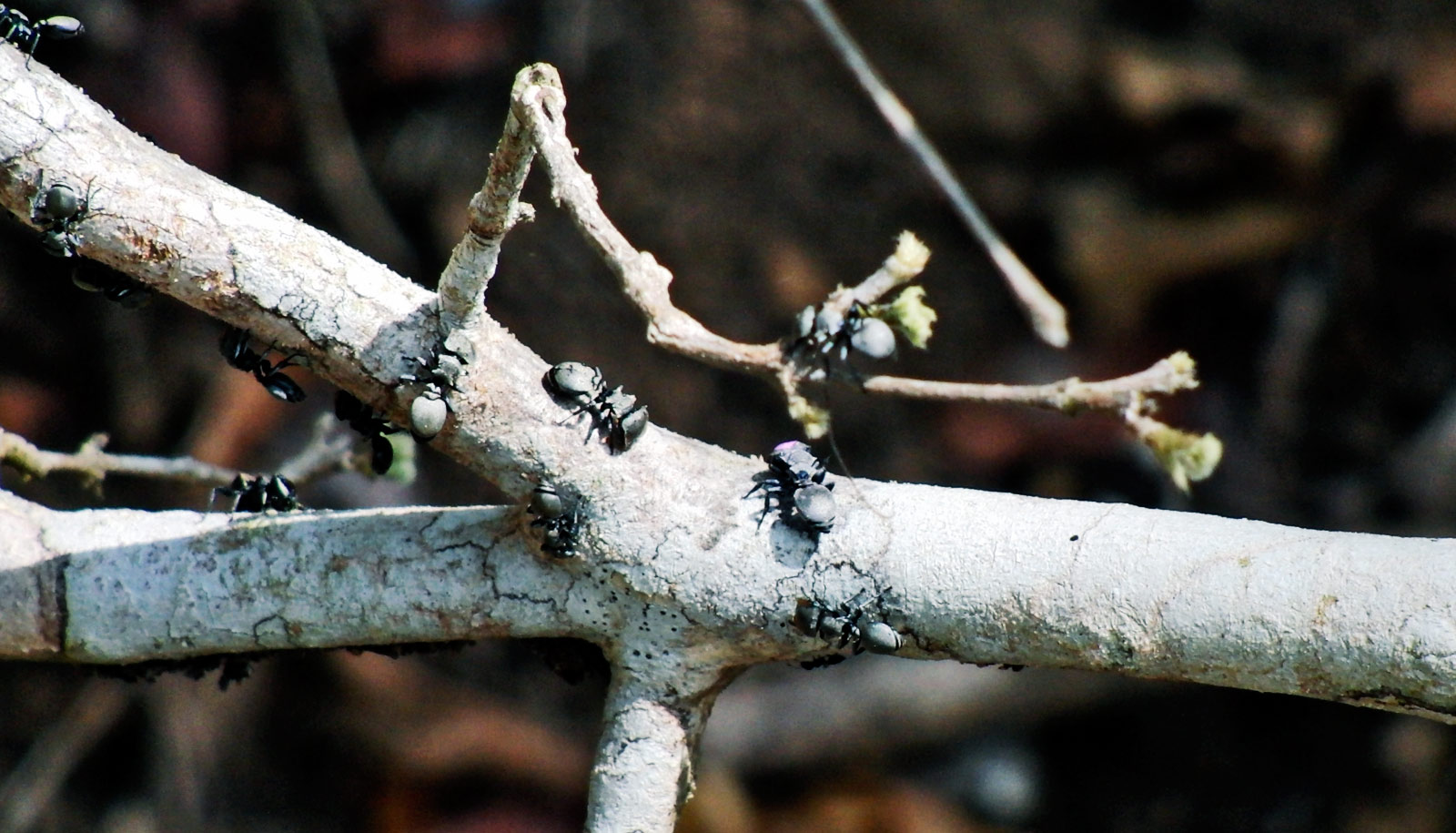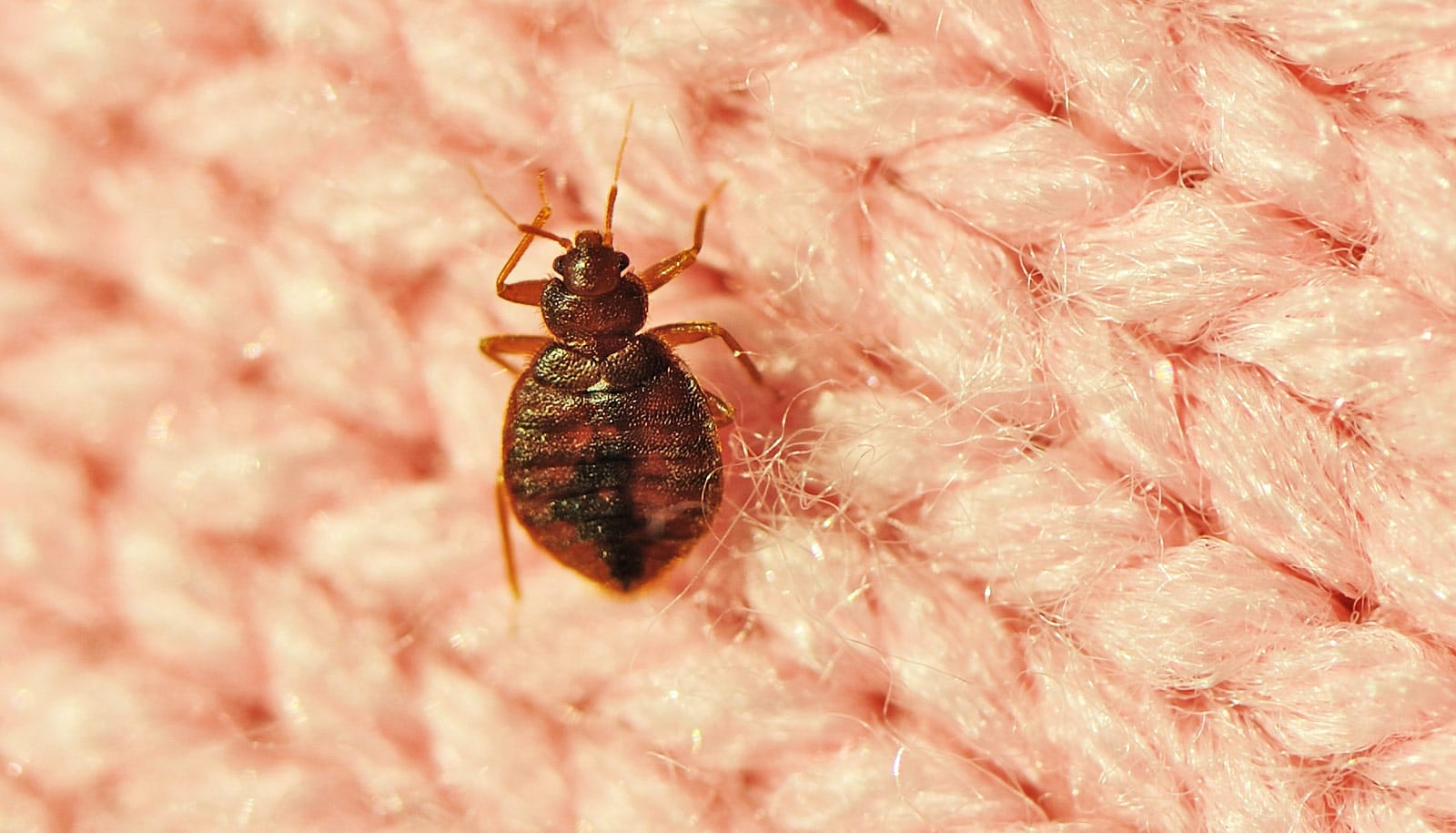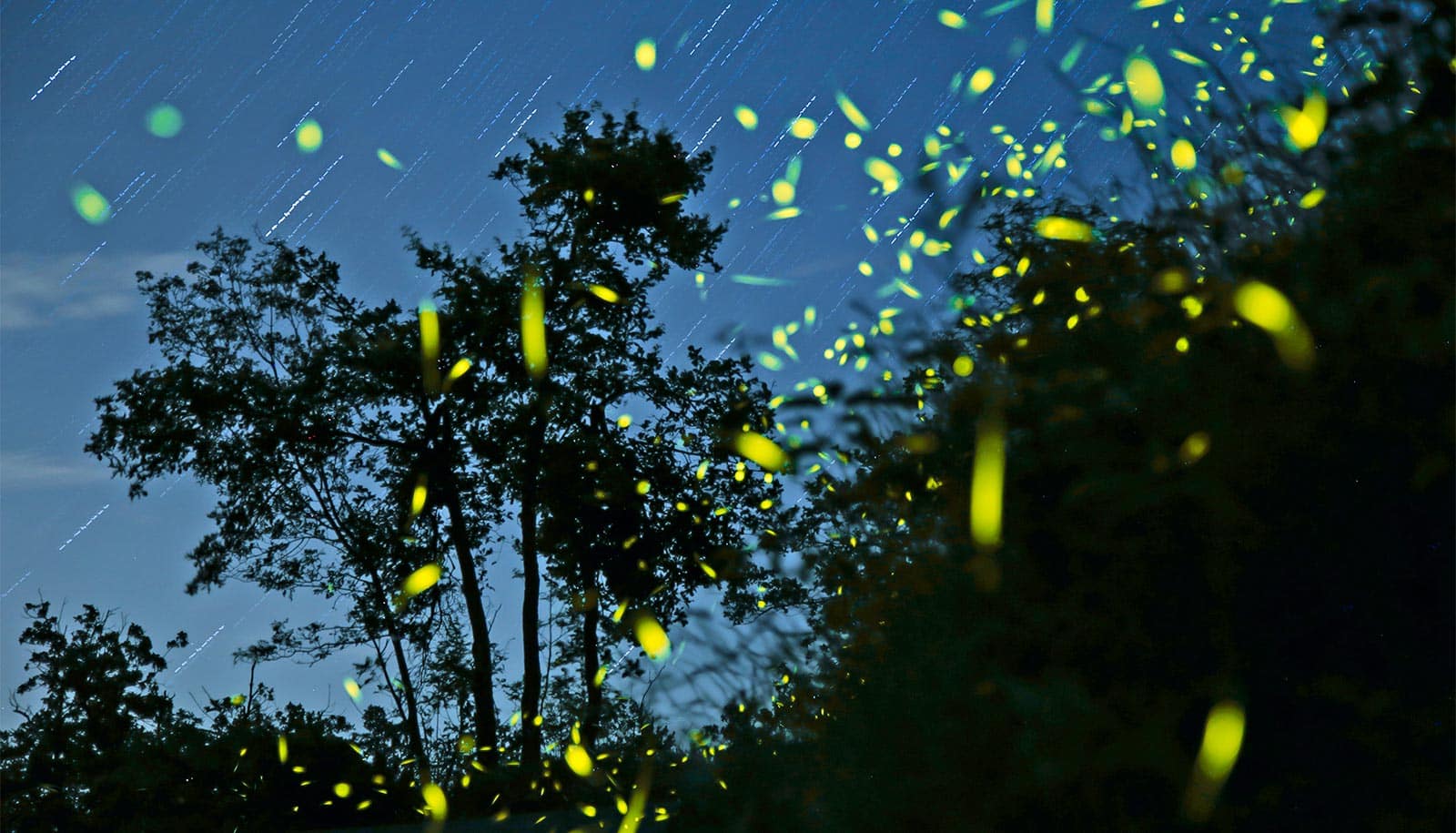A new algorithm explains how turtle ants know what to do when they lose the scent of other ants because of a broken trail.
Imagine you’re a member of the Cephalotes goniodontus species, an ant with a head like Darth Vader that hangs out in tangled tree canopies in Jalisco, Mexico. You’re marching along and all of a sudden you hit an abrupt end. How do you know where to go?
These ants never leave their forest canopy, moving instead through a tangle of vines, bushes, and trees along a circuit of trails that link nests and food sources. But, because the food sources come and go, nests disappear and branches break, the ants’ circuit changes slightly from day to day.
For a new study, Deborah Gordon, professor of biology at Stanford University, mapped the trails and set up experiments to study how the ants responded when new food appeared or branches broke.
Along with Arjun Chandrasekhar and Saket Navlakha of the Salk Institute of Biological Studies at the University of California, San Diego, she analyzed the data to model how the ants repair and prune their trail network.
“At every node, ants could get lost if others have not been there recently enough to leave a chemical trail.”
“At every node, ants could get lost if others have not been there recently enough to leave a chemical trail,” Gordon says. “So there is an ongoing process that creates not the network with the shortest path, but the network with the fewest junctions where ants have to make a decision and could make the wrong one.
“It seems that evolution has favored keeping the ants together on the same network, rather than saving them effort in how far they have to walk.”
The ants choose which route to take at a junction by following pheromone laid by others that recently crossed that junction. Pheromones evaporate, so the path that recently had the most ants is the most attractive one. Gordon marked the ants with nail polish to find the same ants tend to go along the same trails from a nest.
So what happens if the trail gets broken? Ants use a simple plan known as “greedy search,” working around the rupture in the path by moving back to the nearest junction and choosing a new path from that point.
Without pheromone cues, ants become ‘space cadets’
“Even if there is what looks to us like a neater solution available by going back a few nodes, they never use that,” Gordon says. “They always go right back to the node nearest the break and go from there to the nearest node, and so on. Because the vegetation is so tangled, they are able to find a way to the other side of the break.”
Gordon is also a member of Stanford Bio-X and the Stanford Neurosciences Institute and an affiliate of the Stanford Woods Institute for the Environment.
The Cisco Research Fund funded the work that appears in the American Naturalist.
Source: Stanford University



